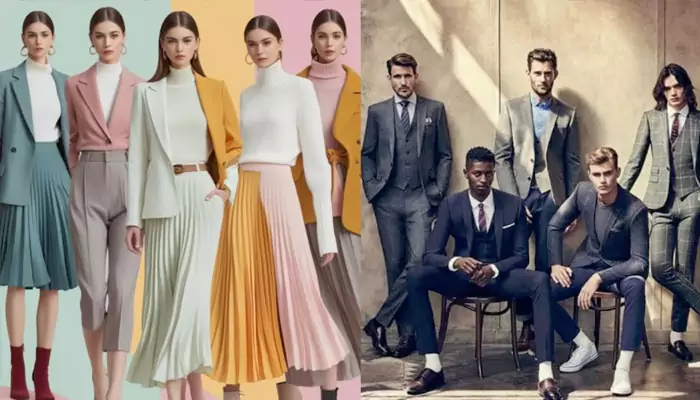
In fashion, trends often come full circle, and in 2025, power dressing has staged a triumphant return.
Once a defining aesthetic of the 1980s—marked by shoulder pads, sharp tailoring, and confident silhouettes—power dressing is back on runways and in wardrobes worldwide. But today’s version is not about replicating past styles. Instead, it reflects a modern reimagining of authority, identity, and confidence in an era where the workplace and personal expression intersect more fluidly than ever.
Power dressing emerged in the late 20th century as women entered corporate spaces in greater numbers. Suits, structured blazers, and tailored dresses became symbols of professional authority, mirroring traditional menswear but with a distinctly feminine interpretation. Designers like Giorgio Armani and Thierry Mugler defined the era, creating ensembles that projected strength and competence.
By the early 2000s, however, the trend softened. Casual Fridays, startup culture, and the rise of athleisure pushed rigid tailoring aside in favor of comfort. Now, as professional environments evolve yet again, power dressing is finding new relevance.
Several cultural and economic shifts explain the resurgence of sharp silhouettes:
Hybrid Work Culture – As offices reopen but remote flexibility remains, professionals are seeking wardrobes that balance comfort with authority. A tailored blazer or structured co-ord instantly elevates an outfit, whether for boardrooms or video calls.
Political and Social Climate – In a time of uncertainty and global shifts, clothing becomes a tool for self-assertion. Sharp tailoring projects stability, confidence, and leadership, qualities that resonate beyond professional spaces.

Fashion’s Cyclical Nature – Designers are revisiting the boldness of the 1980s and 1990s but refining it for contemporary tastes. Instead of oversized shoulder pads, today’s silhouettes rely on precise cuts, architectural tailoring, and gender-fluid styles.
Celebrity Influence – Public figures, from Zendaya to Timothée Chalamet, are championing tailored looks at red carpets, proving that power dressing transcends gender and generational boundaries.
The 2025 version of power dressing moves beyond stiff formality to embrace inclusivity and versatility.
Sharp Suits – Double-breasted blazers, wide-leg trousers, and skirt suits dominate collections from Prada to Alexander McQueen. Unlike past iterations, today’s suits often come in unexpected shades—burgundy, teal, or even metallic—signaling individuality.
Defined Shoulders – Strong shoulder lines remain central but are more sculptural than exaggerated, creating balance and authority without overwhelming the frame.
Waist Emphasis – Belted blazers, corset detailing, and cinched tailoring highlight structure while allowing for fluid movement.
Gender-Fluid Dressing – Designers are dissolving the traditional boundaries between men’s and women’s tailoring, offering inclusive silhouettes that prioritize cut and fit over gender categories.
Texture and Fabric Innovation – Wool blends, satin-finish suiting, and sustainable fabrics elevate traditional tailoring while responding to modern demands for eco-conscious fashion.
Runways in Milan and Paris have showcased a clear appetite for structured fashion, but the movement extends well beyond high fashion. High-street retailers and e-commerce platforms are offering more accessible interpretations, from affordable blazer-dress hybrids to versatile co-ord sets.

Importantly, power dressing has expanded beyond office culture. Social media influencers embrace structured outfits for streetwear styling, while wedding guests, event-goers, and even students are adopting blazers and tailored pieces as statement wear. The look is no longer confined to boardrooms—it represents self-expression in all contexts.
In 2025, power dressing is not about conformity but about redefining authority on individual terms. For women, it offers a way to balance femininity with strength; for men, it provides avenues to explore elegance beyond casualwear. For non-binary individuals, it allows experimentation with structure without being confined to traditional gender codes.
This inclusivity represents the greatest difference from its 1980s origins. Power dressing today is less about fitting into a professional mold and more about using fashion to communicate confidence, presence, and individuality.